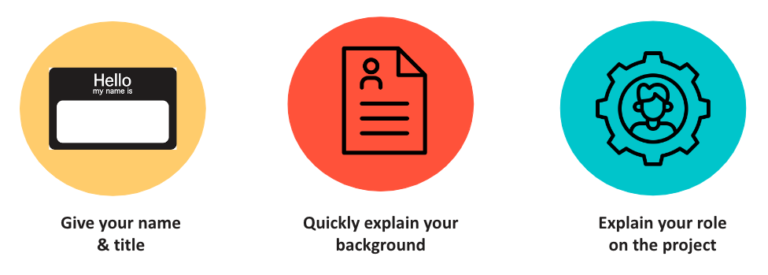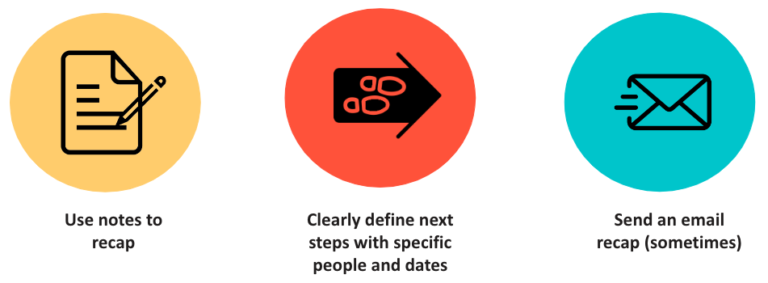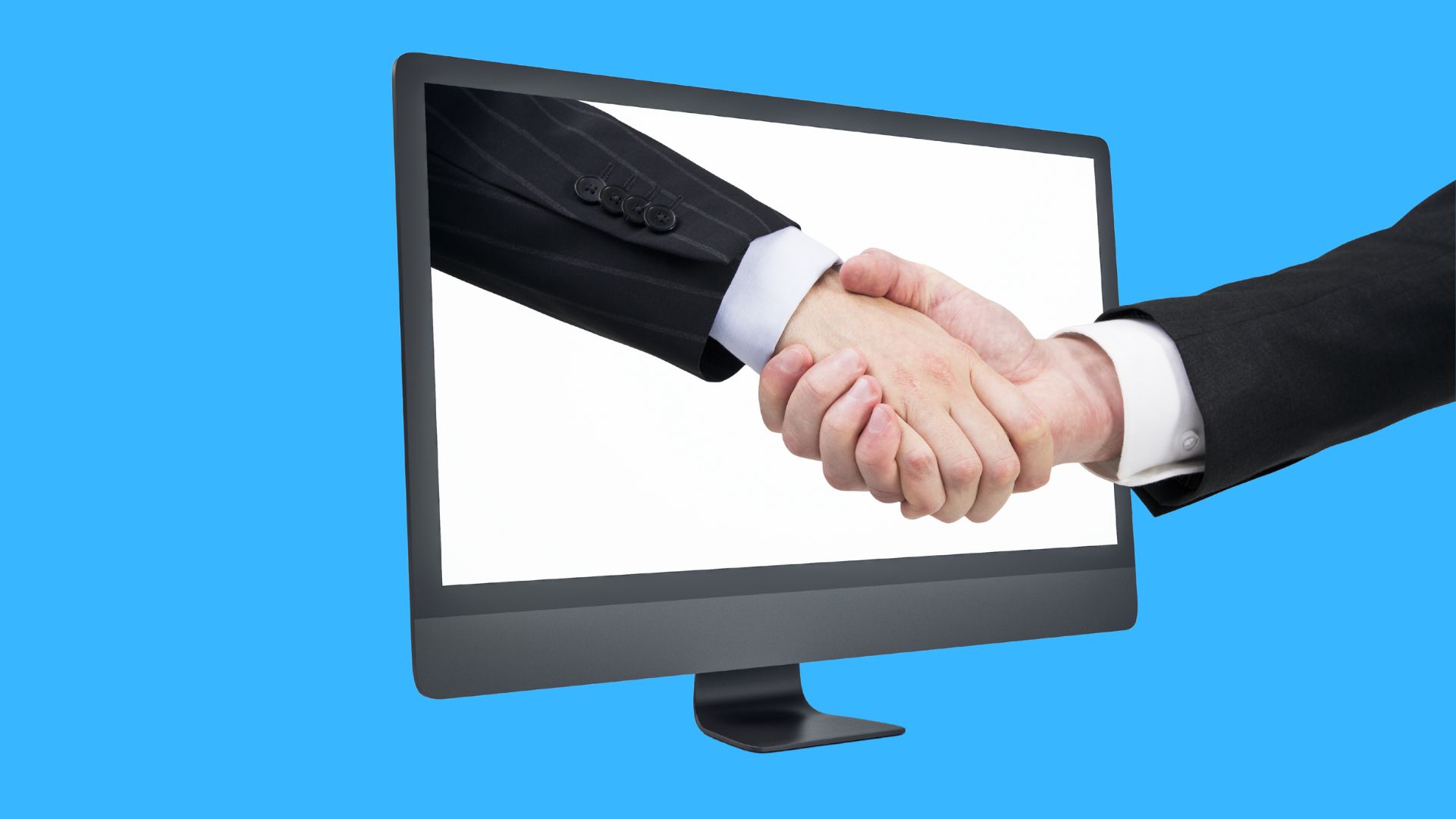RevOps consulting requires more than technical expertise; it demands an artful approach to holding effective meetings. In an environment where time is a precious commodity (for both parties involved), ensuring that every interaction is purposeful and valuable is vital. That’s not to say that every single second of an interaction needs to be super serious and strictly business-only; we know that the most successful relationships–professional or otherwise–are built upon a foundational understanding that we’re all human, we all have different things happening in our lives, and that we all just want the best outcomes for one another.
All that being said, integrating this holistic understanding with other strategies such as what we share below, creates a synergy that propels everyone planning to show up to a meeting feeling informed and fulfilled. And it all starts before the meeting even happens.
Precision in Planning
Holding an effective meeting begins with thoughtful scheduling. Ensure you’re using the right scheduling tools to identify optimal time slots for all participants. Clearly outline the meeting agenda and objectives in advance, allowing stakeholders (including yourself) to come prepared. This not only respects the busy schedules of higher-ups but also sets the foundation for a focused and productive discussion.
In kick-off or intro meetings, it’s possible that your guests may not have a precise expectation of what you’ll be presenting or what they need to come to the meeting with. Nevertheless, investing extra effort in your own preparation not only enhances your professional image and first impression but also instills a sense of calm and confidence as you approach the meeting.
The meeting’s on the calendar, and you’re almost ready to hop on. Before pressing start, take a moment to decide on a note-taking strategy. Efficient note-taking not only helps you stay organized during the meeting but also serves as a valuable reference afterward.

You also don’t want to be scrambling in the moment, so whether it’s on a working document shared with your participants, or a trustee pen and notebook—yes, some of us still prefer this non-digital method too—knowing how you’ll be keeping up with the call adds to your readiness.
Perhaps you or another meeting participant would like to be fully engaged in the moment and would find it beneficial to have a recording or transcription for later reference. There are many tools out there like Otter, Gong, Zoom, Outreach Kaia, and Google Meet that can do this. Thinking ahead and considering this before your meeting is a wise move, but don’t forget to as permission and disclose it to anyone hopping in a bit later that you will be recording.
Starting the Meeting: Cultivate a Collaborative Atmosphere
A successful meeting initiation requires a blend of professionalism and warmth, like we stated earlier. Be sure to genuinely welcome and greet everyone, expressing appreciation for participants’ time. If you are the main point of contact for a client, introduce yourself first, and then pass to your team. It’s always good to check in advance that your team is ready to speak. After all, they reflect your expertise and the high standards you want your team’s work to be known for moving forward.


After introductions, shift to a concise overview of the agenda items, ensuring clarity on the meeting’s purpose. This not only sets the tone for an engaging and collaborative conversation but also fosters a shared understanding among all participants. Before diving into those agenda plans or presenting updates if this isn’t an intro meeting, let your guest(s) share anything important from their side. This shows that you’re paying attention and committed to a two-way exchange of information, making the meeting more positive and effective.
For virtual meetings, get your space ready for action! Make sure you’re in control of the call, keep it professional, and cut out any distractions around you. Just like you’d present yourself when meeting in person, you’d want your audience to have an optimal view of your face and be able to hear you clearly. Check on your video and audio setup ahead of time to avoid having to make more adjustments than necessary when you’re already on the call.
For regular cadence calls (following a bit more of a formal intro), it’s common for these meetings to gradually transition into a more informal atmosphere or delve into familiar topics. However, that doesn’t mean you should show up any less prepared or not maintain a structured approach. Continuing to provide a structured framework reinforces professionalism and ensures that essential points are addressed.
Continue to build rapport with your participants and show interest on a human level through initial greetings. Take the first little bit to catch up and wait for everyone to arrive, and then follow by reviewing any topics to be covered with your planned structure.
Proactive Solutions for Smooth Discussions
First and foremost, we know technical glitches or other challenges happen…but they can still disrupt the flow of a meeting. Anticipate potential issues by having a backup plan for virtual meetings and some support strategies readily available, such as preparing one of your team members to take the reigns if need be.

When having to navigate potential frustrations that may arise during a professional meeting, whether with a client or another stakeholder, knowing how to effectively communicate can help ease any boiling blood. Stay calm, actively listen, and speak plainly, avoiding super technical jargon—sometimes it does more harm than good.
When introducing new terms, check for familiarity to ensure a shared understanding by asking questions like, “Before I get into the specifics, is everyone familiar with X?”. Setting clear expectations and addressing scope changes promptly, including their implications on timing and budgets, helps manage potential sources of frustration. Repeat their concerns back to them to ensure understanding and alignment. Then emphasize the collaborative nature of the relationship, reinforcing that you are on the same team.
When faced with challenges, outline the steps you plan to take for resolution, even if they’re not purely technical. For instance, expressing the need to consult with your team and providing a timeframe for a plan’s delivery demonstrates proactive problem-solving. Remember, you’re also human. You may not have all the answers right then-and-there, and that’s okay. Rather than asking as many questions as you can to understand, equip yourself with the readiness to ask ‘the right questions’ so you can understand more efficiently and effectively.
Closing The Call: Summarizing, Clarifying,
and Confirming Action Items
Be sure that you’re checking in with the timing of the meeting throughout so that you can conclude in a timely manner. As the meeting comes to a close, transition smoothly into summarized key takeaways and action items, again, ensuring a shared understanding among all participants. Encourage questions and clarifications, fostering a sense of collective commitment. Conclude on a positive note, expressing gratitude for the participation and any contributions made.

The post-meeting follow-up is a critical step in solidifying the value of the interaction. Send a comprehensive summary email or Slack message, reiterating key points, action items, and deadlines. Alternatively, you can reiterate where to find these updates or minutes if there is a shared living document instead. Reinforce the notion that collaboration is ongoing, and your team is readily available for further questions or support if needed.
Continuous Improvement is the Key to Effective Meetings
Regularly assess and improve meeting processes by incorporating valuable feedback. Embrace new tools and methodologies that have the potential to elevate communication and collaboration can also help. And of course, cultivate a culture of adaptability and continuous refinement, ensuring your approach evolves to align with the changing needs of both your company and your guests, clients, and partners.

When days are busy and time can almost be seen as currency, mastering the intricacies of effective meetings to provide the most value is a competitive advantage. By planning ahead, cultivating collaborative atmospheres, proactively addressing challenges, summarizing with precision, and reinforcing commitments through follow-ups, you can ensure that every meeting is a valuable investment. Adopt a culture of continuous improvement, and watch as your meetings become not just an obligation but a source of genuine value, satisfaction, and engagement for everyone involved.
